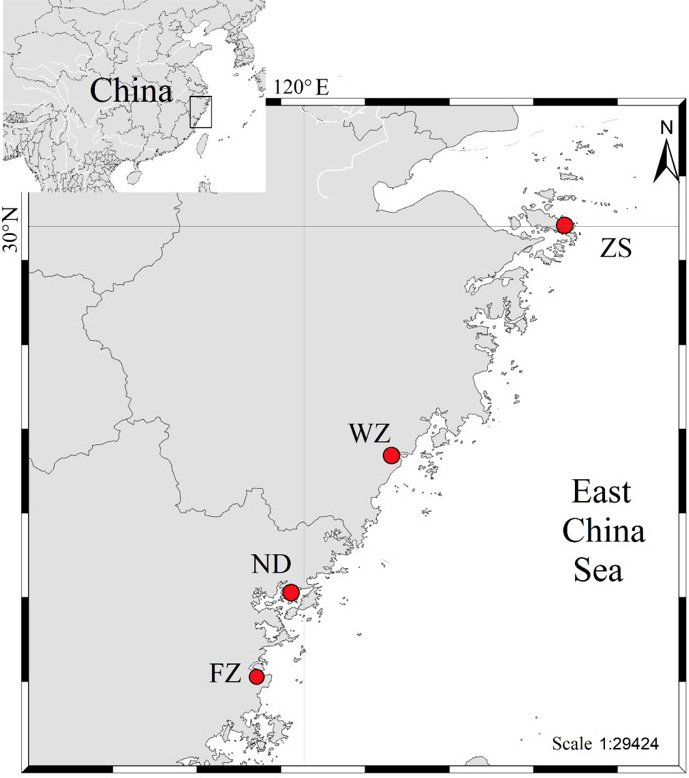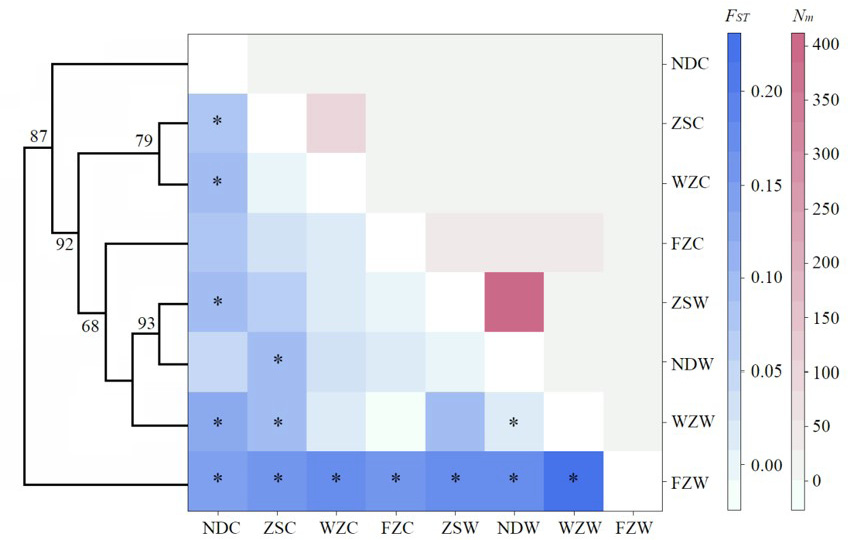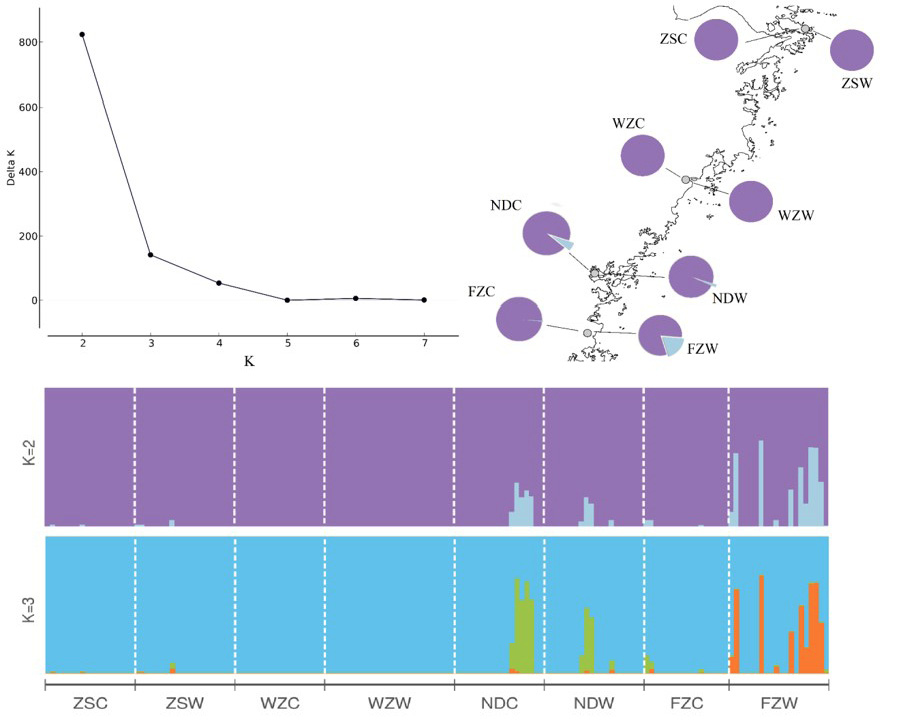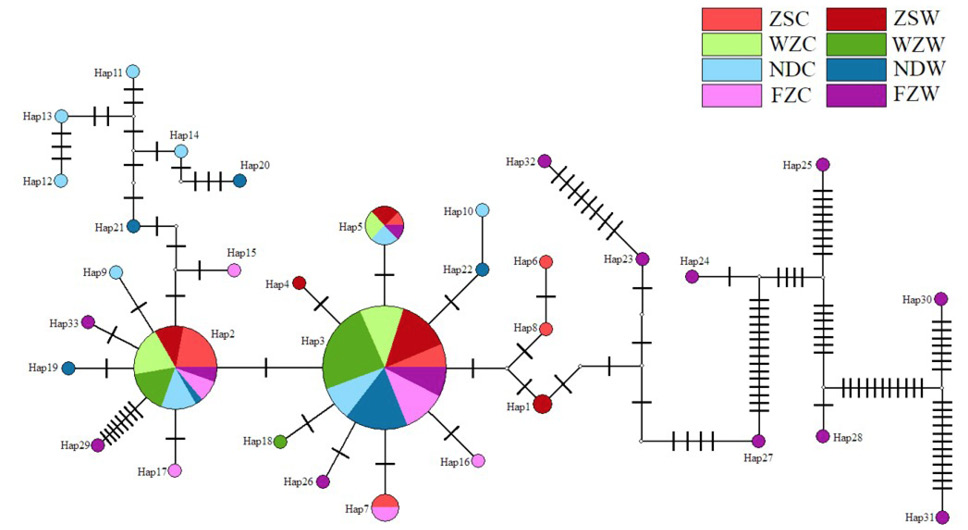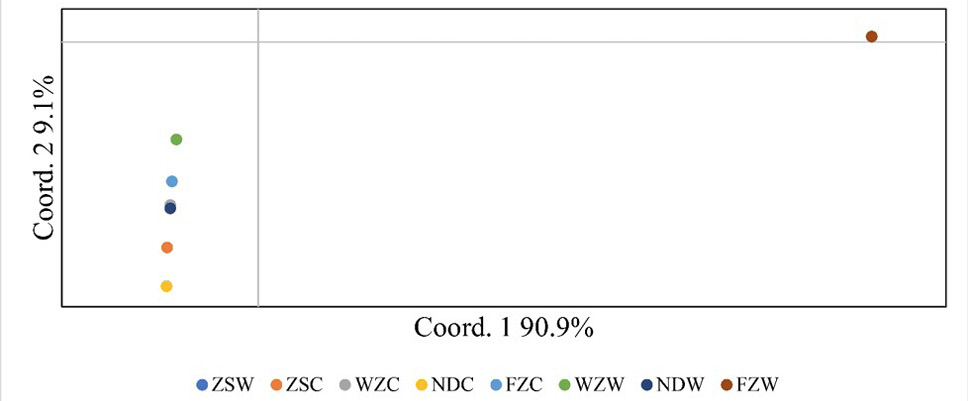Wild Resource Diversity of Mytilus unguiculatus Reduced by Aquaculture in the Southeast China Sea
Wild Resource Diversity of Mytilus unguiculatus Reduced by Aquaculture in the Southeast China Sea
Yahong Guo1,3, Zeqin Fu1,3, Jiantong Feng1,3, Chengrui Yan1,3, Yingying Ye1,3*, Kaida Xu2 and Baoying Guo1,3
The map shows the sampling locations in the East China Sea.
UPGMA tree of 33 haplotypes of the 16S rRNA gene and the number of haplotypes of the eight specimens groups.
Heatmap of FST and Nm with the UPGMA tree for the eight specimens groups. The pairwise FST values ranged from -0.009 to 0.216, and Nm ranged from 1.22 to 384.87.
STRUCTURE analysis for the 16S rRNA of Mytilus unguiculatus.
Haplotype network for the eight specimens of Mytilus unguiculatus. The plot of the haplotype network showed that these haplotypes were gathered into one cluster.
Principal coordinate analysis of population differentiation on the basis of the 16S rRNA.







